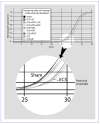Chemoprevention of cigarette smoke-induced alterations of MicroRNA expression in rat lungs
- PMID: 20051373
- PMCID: PMC4294455
- DOI: 10.1158/1940-6207.CAPR-09-0202
Chemoprevention of cigarette smoke-induced alterations of MicroRNA expression in rat lungs
Abstract
We previously showed that exposure to environmental cigarette smoke (ECS) for 28 days causes extensive downregulation of microRNA expression in the lungs of rats, resulting in the overexpression of multiple genes and proteins. In the present study, we evaluated by microarray the expression of 484 microRNAs in the lungs of either ECS-free or ECS-exposed rats treated with the orally administered chemopreventive agents N-acetylcysteine, oltipraz, indole-3-carbinol, 5,6-benzoflavone, and phenethyl isothiocyanate (as single agents or in combinations). This is the first study of microRNA modulation by chemopreventive agents in nonmalignant tissues. Scatterplot, hierarchical cluster, and principal component analyses of microarray and quantitative PCR data showed that none of the above chemopreventive regimens appreciably affected the baseline microRNA expression, indicating potential safety. On the other hand, all of them attenuated ECS-induced alterations but to a variable extent and with different patterns, indicating potential preventive efficacy. The main ECS-altered functions that were modulated by chemopreventive agents included cell proliferation, apoptosis, differentiation, Ras activation, P53 functions, NF-kappaB pathway, transforming growth factor-related stress response, and angiogenesis. Some microRNAs known to be polymorphic in humans were downregulated by ECS and were protected by chemopreventive agents. This study provides proof-of-concept and validation of technology that we are further refining to screen and prioritize potential agents for continued development and to help elucidate their biological effects and mechanisms. Therefore, microRNA analysis may provide a new tool for predicting at early carcinogenesis stages both the potential safety and efficacy of cancer chemopreventive agents.
Conflict of interest statement
No potential conflicts of interest were disclosed.
Figures




Similar articles
-
Modulation of multigene expression and proteome profiles by chemopreventive agents.Mutat Res. 2005 Dec 11;591(1-2):212-23. doi: 10.1016/j.mrfmmm.2005.03.032. Epub 2005 Aug 3. Mutat Res. 2005. PMID: 16083920
-
Modulation of biomarkers by chemopreventive agents in smoke-exposed rats.Cancer Res. 2001 Mar 15;61(6):2472-9. Cancer Res. 2001. PMID: 11289117
-
Modulation of apoptosis by cancer chemopreventive agents.Mutat Res. 2005 Dec 11;591(1-2):173-86. doi: 10.1016/j.mrfmmm.2005.03.034. Epub 2005 Aug 30. Mutat Res. 2005. PMID: 16137721
-
Smoke-induced microRNA and related proteome alterations. Modulation by chemopreventive agents.Int J Cancer. 2012 Dec 15;131(12):2763-73. doi: 10.1002/ijc.27814. Epub 2012 Sep 26. Int J Cancer. 2012. PMID: 22945459 Review.
-
Role of phase 2 enzyme induction in chemoprotection by dithiolethiones.Mutat Res. 2001 Sep 1;480-481:305-15. doi: 10.1016/s0027-5107(01)00190-7. Mutat Res. 2001. PMID: 11506823 Review.
Cited by
-
Mechanisms Underlying Biological Effects of Cruciferous Glucosinolate-Derived Isothiocyanates/Indoles: A Focus on Metabolic Syndrome.Front Nutr. 2020 Sep 2;7:111. doi: 10.3389/fnut.2020.00111. eCollection 2020. Front Nutr. 2020. PMID: 32984393 Free PMC article. Review.
-
Modulation by metformin of molecular and histopathological alterations in the lung of cigarette smoke-exposed mice.Cancer Med. 2014 Jun;3(3):719-30. doi: 10.1002/cam4.234. Epub 2014 Mar 28. Cancer Med. 2014. PMID: 24683044 Free PMC article.
-
Inhibition of proliferation of human lung cancer cells by green tea catechins is mediated by upregulation of let-7.Exp Ther Med. 2012 Aug;4(2):267-272. doi: 10.3892/etm.2012.580. Epub 2012 May 17. Exp Ther Med. 2012. PMID: 22970031 Free PMC article.
-
Modulation of microRNA expression by budesonide, phenethyl isothiocyanate and cigarette smoke in mouse liver and lung.Carcinogenesis. 2010 May;31(5):894-901. doi: 10.1093/carcin/bgq037. Epub 2010 Feb 9. Carcinogenesis. 2010. PMID: 20145010 Free PMC article.
-
Assay of lapatinib in murine models of cigarette smoke carcinogenesis.Carcinogenesis. 2014 Oct;35(10):2300-7. doi: 10.1093/carcin/bgu154. Epub 2014 Jul 22. Carcinogenesis. 2014. PMID: 25053627 Free PMC article.
References
-
- Xu P, Guo M, Hay BA. MicroRNAs and the regulation of cell death. Trends Genet. 2004;20:617–24. - PubMed
-
- Karp X, Ambros V. Developmental biology. Encountering microRNAs in cell fate signaling. Science. 2005;310:1288–9. - PubMed
-
- Chen CZ, Li L, Lodish HF, Bartel DP. MicroRNAs modulate hematopoietic lineage differentiation. Science. 2004;303:83–6. - PubMed
-
- Poy MN, Eliasson L, Krutzfeldt J, et al. A pancreatic-islet specific miRNA regulates insulin secretion. Nature. 2004;432:226–30. - PubMed
Publication types
MeSH terms
Substances
Grants and funding
LinkOut - more resources
Full Text Sources
Medical
Molecular Biology Databases
Research Materials
Miscellaneous

